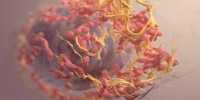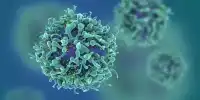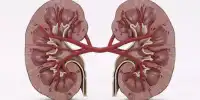Air pollution is generally recognized to be damaging to health, and new evidence supports the concept that exposure to air pollution may lead to the development of lung diseases, metabolic disorders, and cardiovascular disease. While there are acute consequences of air pollution, we don’t know if exposures during pregnancy or infancy have a higher impact on disease development than those experienced as an adult, or if morbidity is simply caused by the accumulation of exposures.
Pollution exposure during pregnancy can have serious consequences for newborns and children that can last into adulthood. Air pollution, for example, has been linked to an increased risk of low birth weight, preterm birth, and the development of asthma later in life. Much of this is due to the rapid rate of fetal growth and development; nevertheless, the precise mechanisms by which pollutants cause these effects, as well as the functions of genes involved in immune function and stress response, are not entirely understood.
Researchers from Texas A&M University and the University of Florida collaborated in a study published in the journal Antioxidants to determine how a gene associated with oxidant response known as Nrf2 influences fetal development in an experimental model. Natalie Johnson, Ph.D., associate professor at Texas A&M School of Public Health, Carmen Lau, DVM, Jonathan Behlen, and colleagues exposed animal models engineered to lack the Nrf2 gene and unmodified animal models to particle pollution such as that seen in diesel exhaust. They then looked at the effects on litter size, birth weight, and immunological markers detected in newborn offspring’s lung and liver tissue.
We discovered links between fine particulate pollution and an increased risk of respiratory disorders, but less research has been done on ultrafine pollutants, and there are presently no health regulations in place for this lowest category.
Natalie Johnson
Particulate matter pollution is classified according to particle size into three categories: coarse particles, fine particles, and ultrafine particles. The most dangerous particles are fine particles less than 2.5 microns in diameter and ultrafine particles less than one-tenth of a micron in diameter. Researchers have discovered links between fine particulate pollution and an increased risk of respiratory disorders, but less research has been done on ultrafine pollutants, and there are presently no health regulations in place for this lowest category. Because of their small size, ultrafine particles can penetrate deeper into the airways, perhaps posing a greater health risk than fine particles.
The gene Nrf2 is known to alter the immunological function and stress response in adults, but research on its effects in newborns and children has been limited. Researchers exposed both unmodified animal models and those with Nrf2 genes knocked out to fresh, filtered air and air containing ultrafine particles like those found in diesel exhaust, a common pollutant in urban areas, to better understand the role of Nrf2 during development and clarify how ultrafine particles affect health. The researchers tracked the weight gain of pregnant animal models in all four groups, as well as the litter sizes and birth weights of the offspring.

There were no statistically significant differences in weight increase between the four groups of animal models throughout pregnancy. Similarly, no discernible variations in litter size were observed. The Nrf2-deficient progeny, on the other hand, had lower birth weights than their unmodified counterparts, with the highest impacts in Nrf2-deficient animal models exposed to pollution. Pollution had no effect on unaltered animal models, suggesting that Nrf2 may play a protective role during pregnancy.
The researchers then looked at lung and liver tissue from the offspring to see if there were any variations in immunological markers or gene expression associated to an oxidative stress response. They discovered significant variations in immunological markers in Nrf2-deficient offspring, indicating that immune function in those models had changed. These data suggest that the lack of a functional Nrf2 gene is a major contributor to the disparities between the groups.
These findings are consistent with past research that have discovered links between Nrf2 depletion and certain chronic illnesses. Previous studies, for example, discovered that adult Nrf2-deficient animal models were more prone to acquire autoimmune disorders. Although more work lies ahead, this study demonstrates that the absence of a functioning Nrf2 gene affects prenatal growth of animal models, especially when exposed to ultrafine particulate air pollution in utero.
These findings could point to a mechanism by which ultrafine particulate matter can influence placental function and prenatal health. This emphasizes the need for more research into the functions of genes in immunological and stress response, as well as how those genes interact with environmental factors. The study also emphasizes the significance of establishing health guidelines for ultrafine particulate matter pollution, which appears to have substantial consequences for pregnant and neonatal health and development.
















